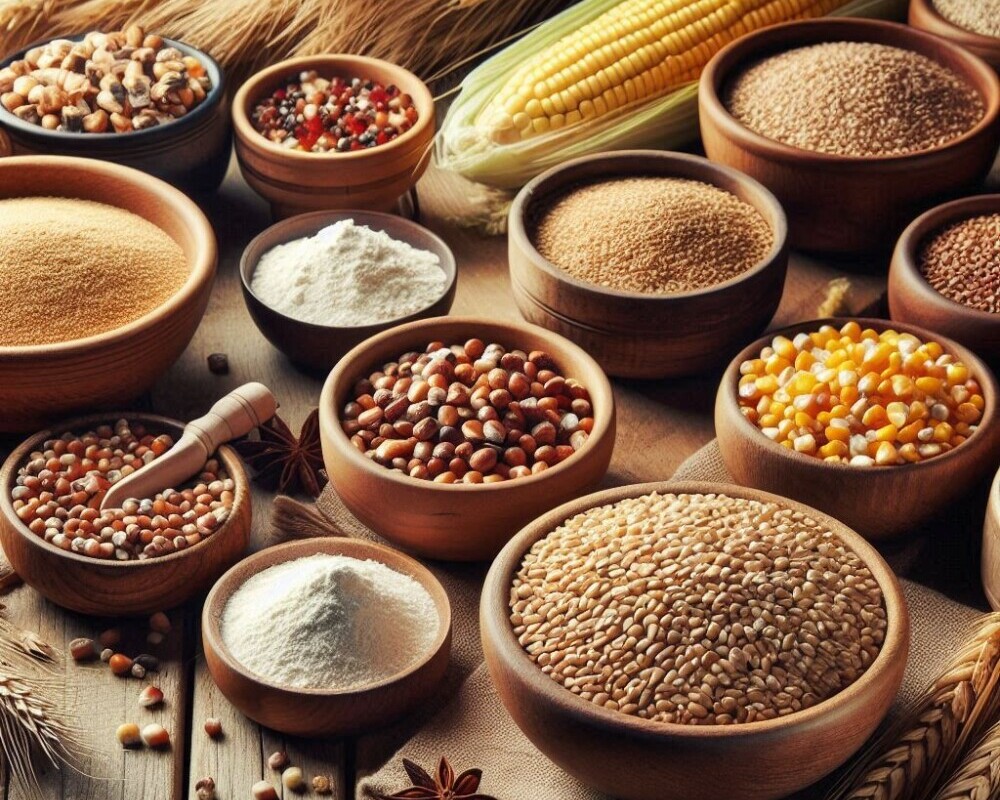
Why Wheat isn’t the Same As Your Grandparents Ate (And What to Eat Instead)
Remember When Bread Didn’t Make You Bloated?
If you’ve ever wondered why so many people today struggle with wheat intolerance, gluten sensitivity, and digestive issues, but your grandparents could eat fresh-baked bread daily without a problem, you’re not alone. The wheat we eat today isn’t the same as the wheat from the 1950s. It has changed dramatically, and not for the better.
Let’s talk about what happened to wheat, why it’s affecting our health, and what better alternatives we should be eating instead.
How Wheat Has Changed Over the Decades
1. Hybridization & Genetic Modification
Back in the 1950s, wheat was a simple, whole food. Farmers grew traditional wheat varieties like Einkorn and Emmer, which had been around for thousands of years. Then, in the 1960s and 70s, scientists started modifying wheat to increase crop yield.
This wasn’t genetic modification in the way GMOs are made today, but rather aggressive hybridization. The goal was to create a shorter, high-yield wheat that could withstand pests and bad weather. Sounds great, right? The problem is that this new wheat also contained far more gluten, making it harder for our bodies to digest.
2. Higher Gluten Content
Gluten is the protein in wheat that gives bread its elasticity, but modern wheat has almost double the gluten content compared to traditional wheat varieties. More gluten means more gut irritation, inflammation, and, for many people, digestive problems. This could explain the sharp rise in gluten sensitivity and celiac disease in the last few decades.
3. More Chemical Exposure
Another major problem is the heavy use of pesticides like glyphosate (commonly found in Roundup). Wheat crops today are often sprayed with glyphosate before harvest to dry them out, a practice known as “pre-harvest desiccation.” The result? We’re consuming higher levels of toxic chemicals, which can disrupt our gut microbiome and contribute to various health issues.
4. Processed Beyond Recognition
In the past, people ate whole wheat that was stone-ground and used in its natural state. Today, wheat is refined, stripped of its fiber and nutrients, and turned into ultra-processed white flour that spikes blood sugar and contributes to weight gain. Plus, food manufacturers add preservatives and synthetic nutrients to compensate for what was lost.
Why Modern Wheat Can Be Harmful to Your Health
If you’ve been feeling bloated, sluggish, or struggling with brain fog, modern wheat could be a big part of the problem. Here’s why:
- Inflammation & Digestive Issues – The high gluten content in modern wheat can irritate the gut lining, leading to leaky gut, bloating, and discomfort.
- Blood Sugar Spikes – Refined wheat flour is quickly converted into sugar in the body, causing insulin spikes and energy crashes.
- Weight Gain & Cravings – The quick digestion of modern wheat leads to hunger cravings, making it easy to overeat.
- Brain Fog & Fatigue – Some people experience mental fatigue and fogginess after eating wheat due to inflammation and blood sugar fluctuations.
- Increased Risk of Chronic Diseases – Studies link excessive wheat consumption to conditions like type 2 diabetes, heart disease, and autoimmune disorders.

Other grains you can still buy today that are healthier for you
What Should You Eat Instead?
If you want to avoid the negative effects of modern wheat but still enjoy grains, you have plenty of healthy alternatives. Here are some options that are easier to digest and much better for your body:
1. Ancient Grains – Less Modified & More Nutritious
- Einkorn Wheat – The original form of wheat, Einkorn is lower in gluten and much easier to digest.
- Spelt – An ancient grain that’s high in protein and fiber, making it a great alternative for baking.
- Kamut (Khorasan Wheat) – A nutty-flavored grain with a better nutrient profile and less inflammatory effects.
- Emmer – Another old-world wheat variety that hasn’t been overly modified.
2. Non-Wheat Gluten-Free Grains
- Quinoa – A complete protein and naturally gluten-free grain that’s great for salads, soups, and baking.
- Amaranth – Rich in protein and fiber, this grain is a fantastic wheat replacement.
- Buckwheat – Despite the name, it’s not wheat at all! Buckwheat is gluten-free and packed with antioxidants.
- Millet – A mild-tasting grain that’s easy on digestion and great in porridges or as a rice substitute.
- Teff – A tiny but powerful grain that’s naturally gluten-free and commonly used in Ethiopian cuisine.
3. Grain-Free Alternatives
- Coconut Flour – High in fiber and a great low-carb substitute for baking.
- Almond Flour – Low in carbs, high in healthy fats, and perfect for gluten-free baking.
- Cassava Flour – Made from the root of the cassava plant, this flour is grain-free and behaves a lot like wheat flour.
Making the Switch: Practical Tips for a Wheat-Free Diet
- Start Small – Swap out processed wheat products like white bread and pasta for healthier alternatives like spelt bread or quinoa pasta.
- Experiment with Baking – If you love baking, try using a mix of almond flour, coconut flour, or buckwheat flour in your recipes.
- Read Labels – Many processed foods contain hidden wheat ingredients, so always check labels for words like “enriched wheat flour” or “modified wheat starch.”
- Choose Whole, Unprocessed Foods – Focus on whole grains, vegetables, and proteins to keep your diet balanced and nutritious.
- Listen to Your Body – Notice how you feel after eating wheat. If you experience bloating, fatigue, or brain fog, it might be time to switch.
Final Thoughts: Do You Really Need Wheat?
The wheat our grandparents ate was a wholesome, nutritious food. But modern wheat has been so heavily altered that it no longer resembles the grain it once was. With its higher gluten content, increased pesticide exposure, and excessive processing, wheat has become a problematic food for many people.
Thankfully, you don’t need to rely on wheat to enjoy delicious meals. By switching to ancient grains, gluten-free options, and grain-free flours, you can improve your digestion, balance your energy, and support your overall health.
So next time you reach for that loaf of bread, consider trying something different, you might be surprised at how much better you feel!
What are your thoughts on modern wheat? Have you noticed a difference in how your body reacts to it? Let me know in the comments!
With warmth & compassion
Shaun.

